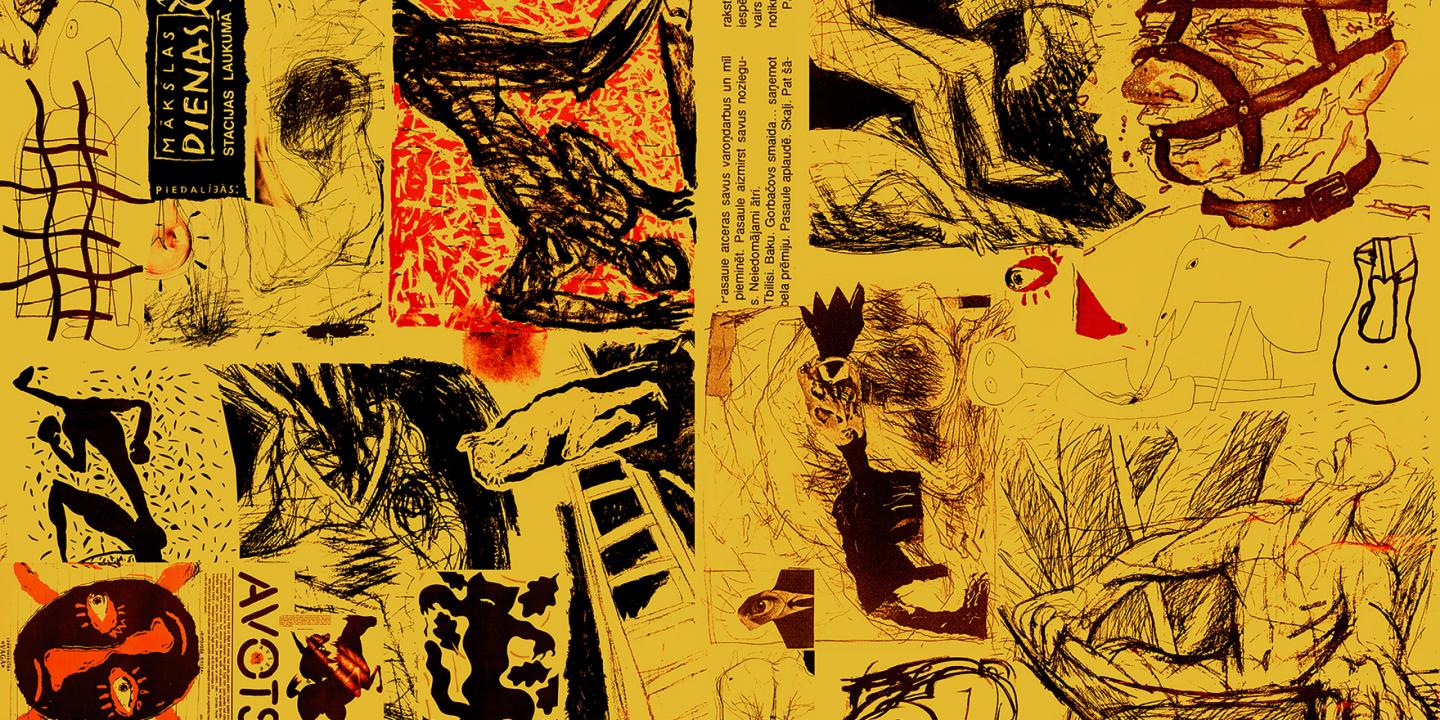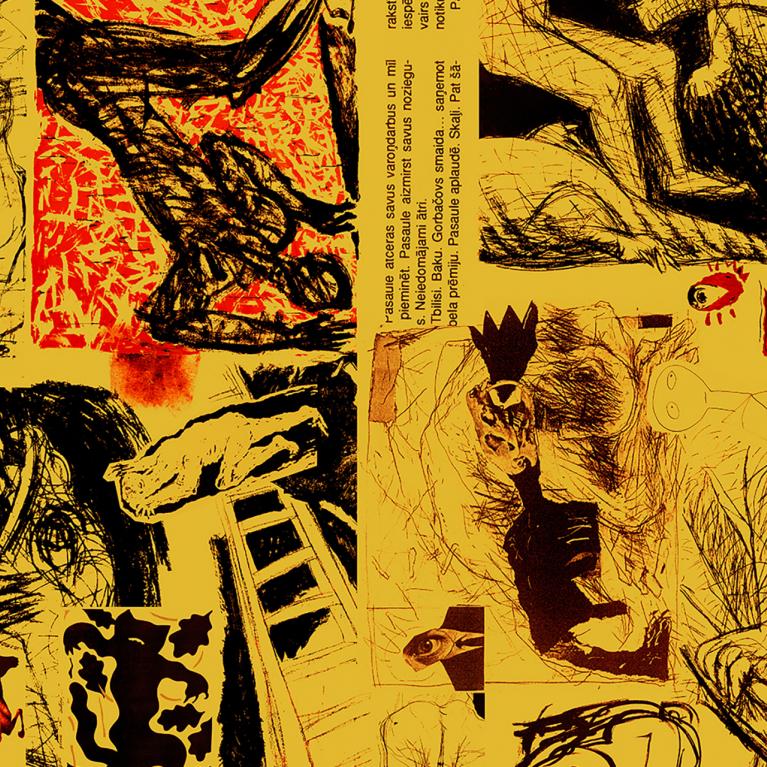Dismantling the Wall. Latvian Art 1985–1991
Exhibition, Dismantling the Wall. Latvian Art 1985–1991, is on display in the left wing halls of the 2nd floor of the main building of the Latvian National Museum of Art in Riga (Jaņa Rozentāla laukums 1), which tells about the processes in Latvian contemporary art during the period of socio-political change.
The exhibition is devoted to Latvian contemporary art’s avant-garde role during the period of restoration of Latvian state independence, when, effected by Mikhail Gorbachev’s policy of openness and restructuring, initiated in 1985, significant liberalisation processes began in society, including, among writers, musicians, artists. These inspired the Latvian public and also influenced political decisions. This recent period of history when art became a form of resistance and promoter of change reminds us of the importance of culture and creative freedom.
The title of the exhibition refers to Kristaps Ģelzis’ video installation Dismantling the Wall in which the wall can be seen as an ideological symbol for the Iron Curtain which divided Europe for four decades. The backbone of the exhibition consists of works from the collection of the Latvian National Museum of Art whose content responds to and turns critically against Soviet socio-political reality, also retaining stark relevance today when close to our borders Russia is waging war and ravaging the territory of Ukraine and the lives of its people. The artists reveal the contradictions and existential experiences characteristic of this era of change by using ideologically charged symbolism, mythological allegories and images as well as speaking entirely openly about momentous events.
In the late 1980s, alongside the debut of a new generation of artists, Latvian contemporary art was beginning to take hold, although the soil had been prepared already since the 1960s when the use of politically non-engaged forms and themes became a means of escapism under the conditions of dogmatic socialist realism. This generation has become known as the trespassers*, yet at the same time the exhibition directs attention towards the preceding generations of artists linked to avant-garde manifestations.
The late 1980s and early 1990s see the rise of the art forms of installation, monumental neo-expressionist graphics and expanded painting. Photography strives to come as close as possible to the socialist system disintegrating all around, performances and actions move from peripheral micro-environments to the centre of the city, first video installations are made and the first audio-visual works appear in Latvian art. Major changes also take place in the art scene – Latvian artists participate in Western art exhibitions to considerable acclaim, international contacts are established and conceptual group exhibitions are made where the interaction between the curator and the artist plays an essential role.
In the shadow of the prevailing sense of fear and uncertainty caused by Russia’s war in Ukraine, the Latvian National Museum of Art attaches particular importance to employing the tools at its disposal to point towards the power of solidarity, resistance and daring. These are decisive values which guided the processes of the National Awakening and dismantled the wall at the close of the 20th century.
The exhibition includes works by Visvaldis Asaris, Ilmārs Blumbergs, Māris Bogustovs, Andris Breže, Uldis Briedis, Biruta Delle, Ingrīda Drāzniece, Kristaps Ģelzis, Helēna Heinrihsone, Ieva Iltnere, Gvido Kajons, Andrejs Kalnačs, Frančeska Kirke, Jānis Knāķis, Sandra Krastiņa, Leonards Laganovskis, Dace Lielā, Aivars Liepiņš, Gunārs Lūsis, Sarmīte Māliņa, Jānis Mitrēvics, NSRD, Ojārs Pētersons, Ivars Poikāns, Miervaldis Polis, Juris Putrāms, Māris Subačs, Laimonis Šēnbergs, Aija Zariņa. The exhibition is supplemented by visual and documentary materials about installations, performances and other significant cultural events.
The exhibition is accompanied by specially developed education programmes for different audiences. In collaboration with law firm Ellex Kļaviņš and communications agency Fox Consulting, a series of video interviews has been produced with eight artists and cultural workers represented in the exhibition: Sandra Krastiņa, Frančeska Kirke, Helēna Heinrihsone, Ivars Poikāns, Andrejs Kalnačs, Uldis Briedis, Ingrīda Drāzniece, and writer Aivars Kļavis, who share their recollections about the spirit of the time of change. In addition, writer Osvalds Zebris has dedicated an essay to each of the authors. All essays, which are available as audio files on the museum’s mobile application and Soundcloud profile, have been voiced by actor Kaspars Znotiņš. Meanwhile artist Kristaps Kalns has produced new photographs of the interviewed artists.
To ensure the exhibition’s accessibility to different audiences, it is designed to be convenient to visit for people in wheelchairs as well as parents with pushchairs. It also includes the exhibition text in easy-to-read language and labels of the works in enlarged print (size 24 pt).
* Research and exhibition by the Latvian Centre for Contemporary Art, 2005.

